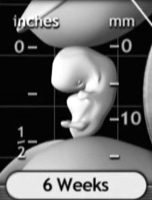 This is part 3 of a series of posts exploring pro-life arguments. Read Part 1 here.
This is part 3 of a series of posts exploring pro-life arguments. Read Part 1 here.
11. But a fetus has a soul!
Does it? If the zygote has a soul and then it splits into twins, does each twin have half a soul or do they get another one as needed or did they get two to begin with? What happens if one of those twins is later absorbed? What about conjoined twins—do they share a single soul like a shared body part? What about babies with terrible birth defects that leave them with very little brain function? What about a person cloned from a skin cell—would they have a soul? And if the story for the soul has a happy ending for the 50% of pregnancies that end in spontaneous (natural) abortion, why not for an artificial abortion?
This mess vanishes if we don’t insist on a soul. As Daniel Dennett said, “What isn’t there doesn’t have to be explained.”
12. “Abortion is much more serious than killing an adult. An adult may or may not be an innocent, but an unborn child is most definitely innocent.”
These are the words of an archbishop from Brazil. He was outraged at the abortion done on a nine-year-old girl, raped and impregnated by her stepfather. In response to the abortion, the church excommunicated the family of the girl and the doctors who performed the abortion.
Wow. Let’s leave this example of how religion makes you do crazy things and focus on the claim. First, a fetus is not a child. Second, the spectrum argument defeats this claim.
Variations on this argument are popular, and they all have pretty much the same response. Here are a few.
12a. Abortion kills a human life (at the bottom of Maslow’s hierarchy) to help with another human’s self-actualization (higher on the hierarchy). That’s the opposite of the way it’s supposed to work.
The two “human lives” are not comparable. This ignores the spectrum of development from single cell to trillion-cell newborn.
Killing a blastocyst with fewer cells than the brain of the fly troubles me less than killing a civilian in another country due to war or killing a criminal on death row.
12b. Don’t we normally go out of our way to defend the defenseless?
Again, this ignores the spectrum. Defenseless people are more important than defenseless cells.
12c. Haven’t we been through this with racial minorities? Declaring that single cells aren’t human is like declaring that African-Americans aren’t human.
Nice try. Spectrum argument.
12d. In response to your abortion clinic example: you argue that, if given a choice between saving a child and ten frozen embryos, you’d save the child. Okay, and if given the choice between your wife and a stranger, you’d save your wife, but that doesn’t mean that you can kill strangers.
Spectrum argument.
13. Haven’t you heard of adoption? That’s the answer to an unplanned pregnancy.
No, it’s clearly not the answer. Two percent of all births to unmarried women in the U.S. are placed for adoption. “Just have the baby and release it for adoption” is a pat on the head. It might make you feel good, but it doesn’t work.
Adoption can also be psychologically difficult, both for mother and child.
14. You say that a trillion cells is definitely a person. Okay, how about a trillion minus one—is that a person? And if so, how about a trillion minus two? And so on.
This is the sorites paradox: if you can take a grain of sand from a heap and it’s still a heap, can you continue to do so and get a “heap” of one grain?
This same game could be played with the blue/green spectrum. If this color is “green,” what about just a touch more blue—isn’t that green as well? We still can’t get around the fact that the two ends of the spectrum are very different—green is not blue! Similarly, a single cell is not a newborn with arms, legs, brain, and so on.
15. The woman who got pregnant knew what she was doing. Let’s encourage people to take responsibility for their actions.
Did she know what she was doing? Not necessarily. Sex education is so poor in the United States that many teens become sexually mature without understanding what causes what.
But let’s assume that the woman knew what she was doing and was careless or stupid. What do we do with this? When someone shoots himself accidentally, that was stupid, but we all pay for the medical and insurance system that puts them back together. Let’s educate people, demand responsibility, and have a harm-reduction approach where we find the best resolution of problem. For a woman whose life would be overturned with a pregnancy, that resolution might be abortion.
Having sex with imperfect contraception is no more a willingness to accept pregnancy than eating a sandwich is a willingness to accept choking. When someone is choking, we do our best to take care of the problem; let’s continue to do the same for an unwanted pregnancy.
Continue to Part 4
The self-proclaimed “pro-life” crowd is entirely too obsessive
about the imaginary people they claim to be concerned about.
They need to calm down,
switch off their circuit diagrams,
get out of their blueprints,
sit in the shade of their acorns,
listen to the pleasant songs of the eggs,
and stop to smell the pollen.
— Richard Russell
(This is a modified version of a post originally published 1/27/12.)









 The pro-life position is often stated this way: (1) human life begins at conception; (2) it is murder to take a human life; therefore (3) abortion is murder and should be considered immoral.
The pro-life position is often stated this way: (1) human life begins at conception; (2) it is murder to take a human life; therefore (3) abortion is murder and should be considered immoral.


 Thanks to the
Thanks to the 
 “A shocking, award-winning documentary!” “Changing the heart of a nation.” “33 minutes that will rock your world.” Ray Comfort lavishes his work with superlatives, but does it hold up?
“A shocking, award-winning documentary!” “Changing the heart of a nation.” “33 minutes that will rock your world.” Ray Comfort lavishes his work with superlatives, but does it hold up?







